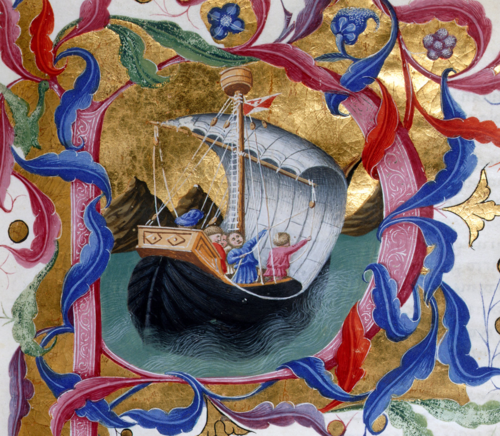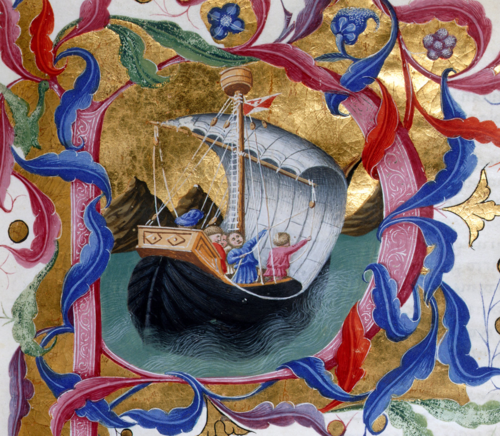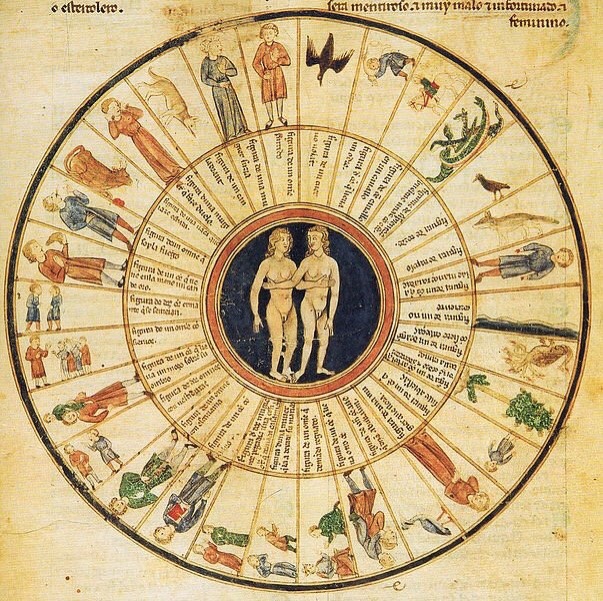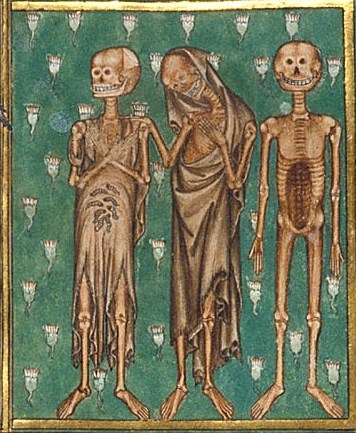Using images in visual writing

With my first essay up on the internet in both its video and blog formats, I've discovered an unexpected difficulty: finding and referencing visual aids.
By its nature, the visual essay relies on image or video components to help provide evidence, clarify points and make the content easy to digest. As I wrote the essay, I had a list of book pages and pictures that I knew I would need to use. The problem is I severely underestimated the number of images that are needed to keep the video engaging.
When it came to editing the video together, I realised I needed to find all kinds of historical visual sources to illustrate my points. I needed to find something for each sentence, not just for each paragraph, or the video would become static and uninteresting.
This is probably common knowledge for video aficionados, but I felt like I was in a tricky situation. How could I (efficiently) find visual sources that were a) from the right time period b) closely related to the exact point I was making and c) from a reputable and easily citable source? The answer is that I couldn't manage to find images that always fitted each criteria. Hopefully this will be something I get better at as time goes on. Until then, here are a few examples to show the kinds of conundrums I encountered and what I did about them:
- It is weirdly difficult to find medieval art of a ship just being a ship

This was a very quick point in the video, but I wanted something to fill the moment when the plague arrives in Europe. I mean, it's a crucial moment! Plus, it was the beginning of the video and I wanted the pace to be quick and engaging so viewers wouldn't click away.
My problem is there seem to be very few visual sources of medieval ships simply sailing around. All of them seemed to be doing something that was completely unrelated to my video. I used this post from the British Library Medieval Manuscripts blog. The ships in the post are going on crusade, riding atop a whale or recusing a boy who fell off London Bridge. I eventually chose the image above where Dante is voyaging to Purgatory. I thought it was the most unobviously irrelevant one, but it still sparks questions. Is it ok to use a manuscript illustration in conjunction with a completely different point without discussing its original context and which of its visual components relate to my video? *deep breath
2. In the search for that perfect picture, it's easy to forget about provenance

I briefly mention medieval astrology and I wanted a source showing an astrologer at work or a chart they might reference. My search for the former brought up nothing and my search for the latter only yielded a few results. I did find my astrology chart and I put it into my video. But when I went back to find out where the chart was from (ie the manuscript, country, date), I only found unverified statements about its origins and it didn't help that they contradicted. I don't want to discredit these anonymous internet users' claims, but I'm supposed to be a trained historian venturing into the online! I can't cite something that could be hearsay. After all, there are so many examples of a historical source being pulled out of context on the internet until it becomes a myth. I tried an image search but got nowhere. In this situation, is it better to cite the unverified claims or is it better to cite nothing at all? The answer is to use images from legitimate databases so I don't have this dilemma in the first place, obviously!
3. Is it the plague or is it leprosy? And that was a question I never thought I would ask

For obvious reason, some medieval art of plague victims would have been useful. Now I'm not sure if they were just being bad at drawing again (I'm sorry medieval scribes, but seriously some of the half-attempts I've seen...) or if there are actually very few contemporary images of plague, but I couldn't find any that convinced me enough to include. Many artistic renditions of the 'plague' did not match the symptoms. They show spots on the face, which are not bubonic plague symptoms as far as I'm aware (only the underarms and groin get the luxury of painful sores). These pictures could be about leprosy sufferers, another disease that was common in the medieval period. In my albeit limited knowledge of horrific disease symptoms, the art seemed more in line with the symptoms of leprosy than the plague.
I decided to use pictures relating to the medieval story 'Three Living and Three Dead' where three men encounter three skeletons. Again, I didn't engage with the full context of this story, which could be a problem if a viewer wonders what the images are really about. However, I think the story is related enough to the video that I'm not worried about confusing my own points, like I was with the pictures of the ships. 'Three Living and Three Dead' is about medieval anxieties and philosophy around death. And what must the Black Death have prompted except anxieties and philosophies about death?
And there we have it. My overthinking about images in my little video essay. But it's important to get these things right because they are what build our overall understanding of a time period. Besides that, it would be a bit embarrassing to include a malapropism or an unrelated image when the main point of my video was that people are using the Plague Doctor for the wrong century...